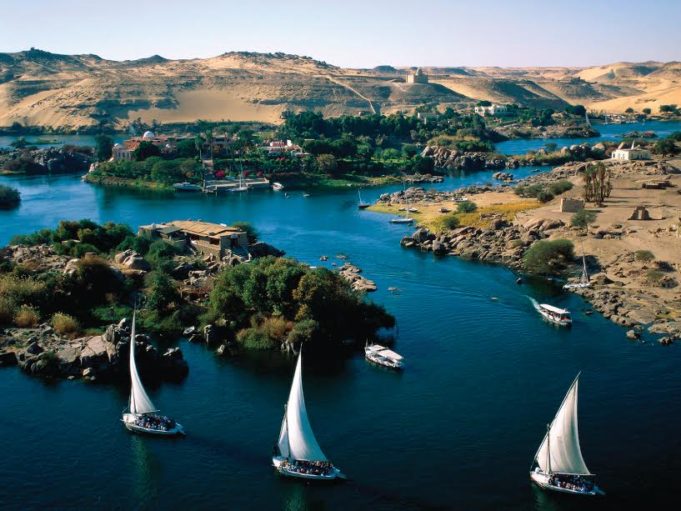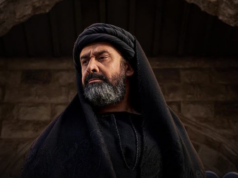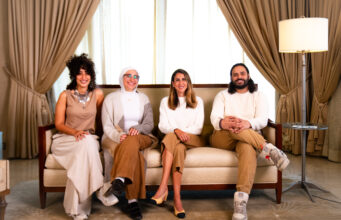by Amina El Ghandour
The Nile is the vein of Egypt, from which all forms of life sprang. For centuries, Egyptians feasted by the Nile and for it. Today, Copts still celebrate it as part of their festivities – we only forgot.
The shift in faith and adoption of a new belief system has not undermined the importance of the Nile for the lives of Egyptians. Its presence remained essential for the sustenance of life itself. Hence, as we delve in the history of the Coptic Church, we find that its liturgical calendar corresponds to that of the Nile cycle and has adapted to the pre-dynastic Egyptian calendar.
EID EL SHAHID (FEAST OF THE MARTYR)
By the 5th century, Egyptian Christianity had formed its individual identity. Its festivities involved the veneration of the saints and was celebrated in different parts of the country with the local population. One specific Coptic festival took place on the banks of the Nile -Eid El Shahid. This feast fell on the 8th of Pashons – that is around the 16th or 17th of May – and the end of the ancient Egyptian harvest season -Shemu. Over the next season, the Nile is expected to rise; its rise to 16-19 cubits indicated an abundant agricultural cycle and a prosperous year for everyone. However, to ensure that this surge took place, Egyptians gathered to witness the blessings of the Coptic priests at the end of the harvest season. They gathered from all over the country to witness the priests of Shubra as they deposited a martyr’s relic, usually placed in a wooden casket into the waters of the Nile. It was a festive event for Egyptians who came from far and wide and dispersed over house roofs, in tents and in boats celebrating with music and food. The presence of Islam did not change this important Egyptian festival – in fact it continued as a significant Coptic/ Egyptian feast up to the 14th century.
COPTIC NEW YEAR
The first day of the Coptic calendar, 1 Thout, falls on the 11th of September. This also marks the end of the ancient Egyptian Akhet season (June to September) when the Nile rises to its highest level, just before it floods and fertilizes the land. This initiated the agricultural cycle. For Egypt, a predominantly agricultural land, the first day of the Coptic year was an official Egyptian feast as well as a Coptic celebration – one of the most important events in Islamic Cairo too. Under Muslim rule, the feast took the name of Nayruz (confused with the Persian feast, Nawruz), and retains that name to the day.
EID EL GHETASS (THE BAPTISM)
Baptism for the Coptic Church had to take place in a sacred Egyptian site – the Nile. On the 11th of Tobi (18 or 19th of January) of each year, Egyptians gathered to observe the sacred ritual and celebrate the Coptic Eid El Ghetass, which commemorates the baptism of Christ. New submersion or baptism into the waters of the Nile used to take place then. It was a festive event for all Egyptians and remained a significant feast under the Fatimids. The Caliph was always present and everyone participated in the festivities that were at times described by historians as ‘excessive’, which hints to the importance and magnitude of the event. Jugglers, musicians and public performers provided entertainment for the festive population. This feast coincides with a seasonal transition falling shortly after the winter solstice and marking the imminent closure of the ancient Egyptian Peret season (October to February).
The Coptic Church was not the first to integrate religious values with cultural ones. In fact, this is a natural phenomenon that history attests to over and over. Judaism transformed completely under Babylonian captivity. In an attempt to survive a state of misplacement and dispossession in Babylon – a foreign land to them -they devised the religious attire and dietary habits that define them today. In Islam, while the Quran remains a core reference, discrepancies between Islamic habits in the Middle East and the Near East are quite evident.
The Coptic faith was born in the heart of Egypt, hence it was natural for its calendar to follow the cycle of the Nile, while Islam initially dawned on a nomadic society that relied heavily on the moon and accordingly it follows a lunar calendar. Religions dawned on us with beautiful messages and for a better humanity. But the messages landed on people rooted to their lands and dependent on the nature it offered them. After all, whether it’s the Nile, the moon, the harvest – these all are divine gifts that sustain our lives in the universe. Recognizing their values and rendering them as part of our religious celebrations is an act of humbleness to the divine.
The Coptic culture represents one of the oldest forms of an organized monotheist worship in Egypt. Its birth on this land brought to being sublime Christian values immersed with a strong Egyptian spirit.



















